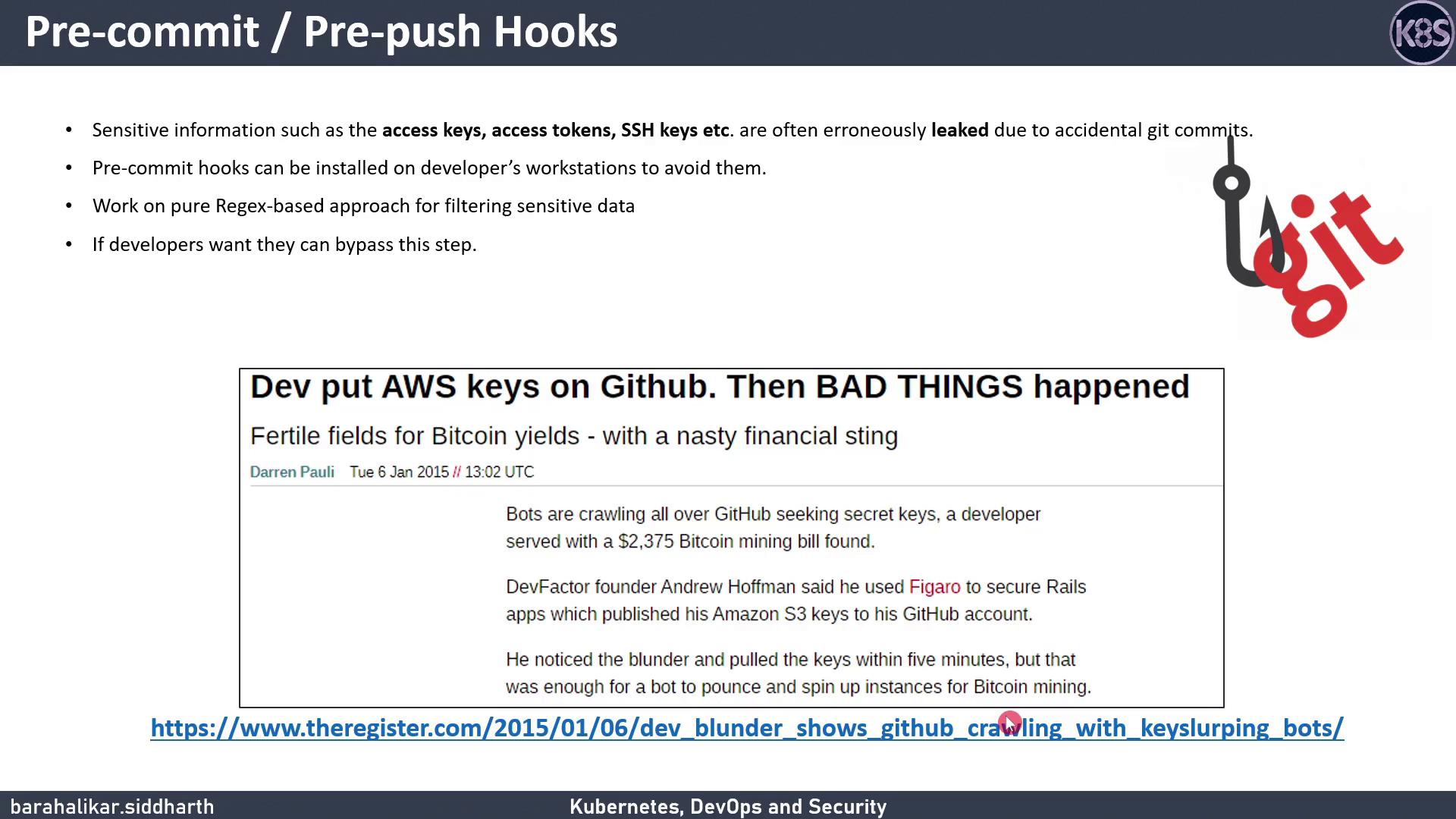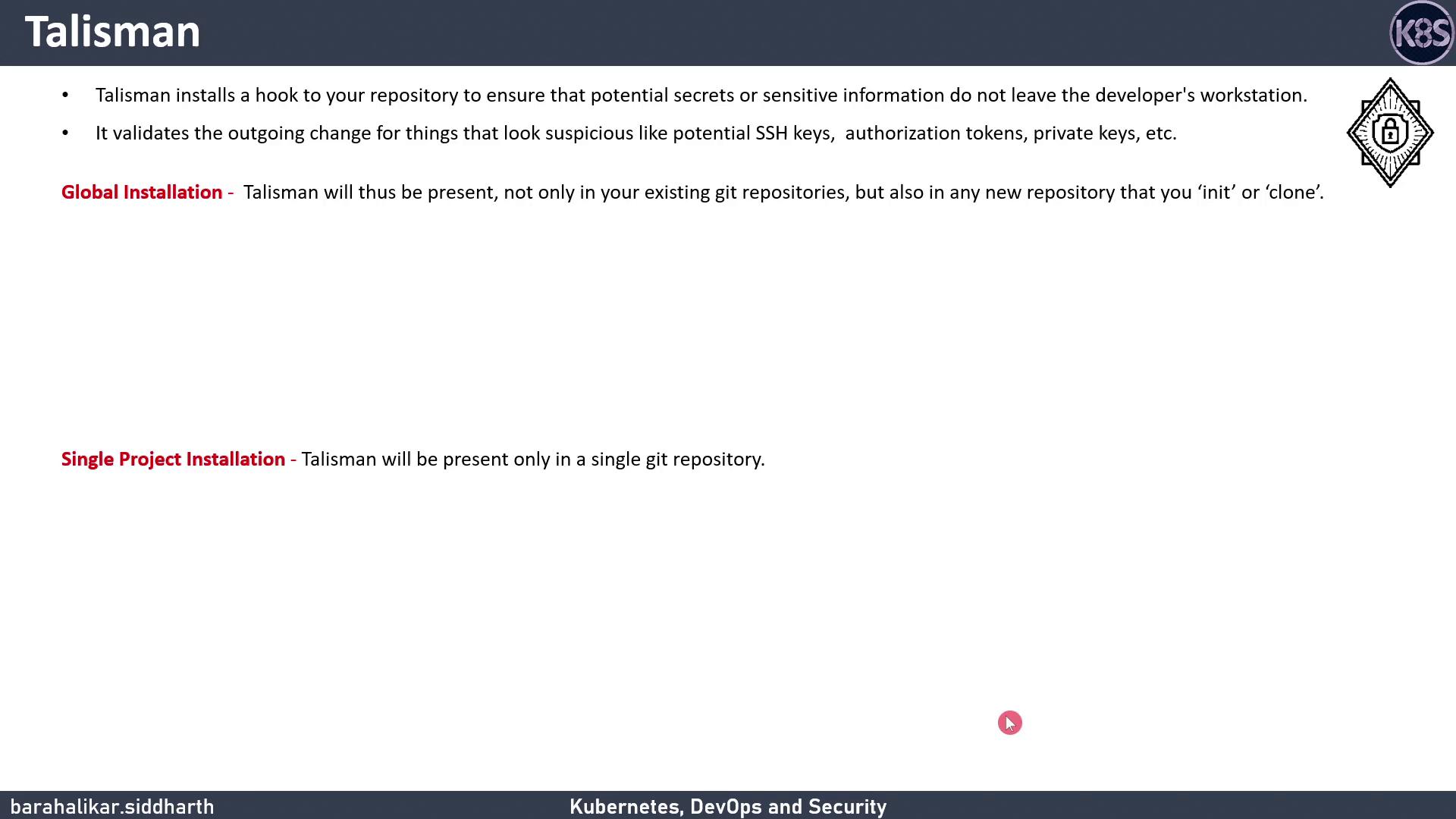DevSecOps - Kubernetes DevOps & Security
DevSecOps Pipeline
Git Hooks and Talisman Introduction
In this lesson, we’ll cover how to use Git hooks—scripts that run at specific points in your Git workflow—to catch accidental commits of sensitive data. We’ll also introduce Talisman, an open-source tool by ThoughtWorks that automates secret scanning in your repository.
Why Git Hooks Matter
In 2015, a developer accidentally pushed AWS S3 access keys to GitHub. Within five minutes, automated bots exploited those keys for Bitcoin mining, accruing a $2,400 bill. Git hooks help you stop this from happening by running custom scripts at critical events like commits and pushes.

Common Git Hook Events
| Hook | Triggers Before |
|---|---|
| pre-commit | Finalizing a commit |
| pre-push | Sending commits to remote |
Introducing Talisman
Talisman installs Git hooks to scan outgoing changes for secrets—passwords, API tokens, private keys, credit-card numbers, and more. It also offers a history-scan feature to uncover any secrets already in your repo.

Installation Options
| Scope | Description |
|---|---|
| Global | Applies hooks to all repos you clone or init on your machine. |
| Single-Project (pre-push) | Limits Talisman to one repo, using a pre-push hook. |
We’ll demonstrate the single-project approach with a pre-push hook.
# Download and make the installer executable
curl https://thoughtworks.github.io/talisman/install.sh > ~/install-talisman.sh
chmod +x ~/install-talisman.sh
# In your project directory
cd my-git-project
~/install-talisman.sh
Note
If you want to apply Talisman globally, see the global_install_scripts in the Talisman repo.
How Talisman Works
When you run git push, Talisman inspects your changes for:
- Base64 or hex-encoded secrets
- Common secret patterns (e.g., passwords, tokens)
- Large files with potential key material
- Credit-card numbers or sensitive file extensions (
.keys,.secrets,.credentials)
If issues are detected, Talisman outputs a report:
| FILE | ERRORS | SEVERITY |
|---|---|---|
| test.txt | Potential secret pattern: password-password | low |
git push origin main
Another example:
| FILE | ERRORS | SEVERITY |
|---|---|---|
| aws | Potential secret pattern: pikey=5589 4513 5412 4562 | low |
filename: aws
checksum: 14e3763161c3485181806245883bf1cebfa4f241dd23f4f01a5f9793ba45
When prompted:
? Do you want to add aws with above checksum in talismanrc ? No
If the file is safe, answer Yes to whitelist it in .talismanrc. Otherwise, you can bypass Talisman with:
git push origin main --no-verify
Warning
Bypassing hooks (--no-verify) skips all pre-push checks. Use this only when you’re certain no sensitive data is included.
Managing Talisman
To remove Talisman from your project, delete the hook scripts in .git/hooks/ (for example, pre-push or pre-commit).
Further Reading
Watch Video
Watch video content